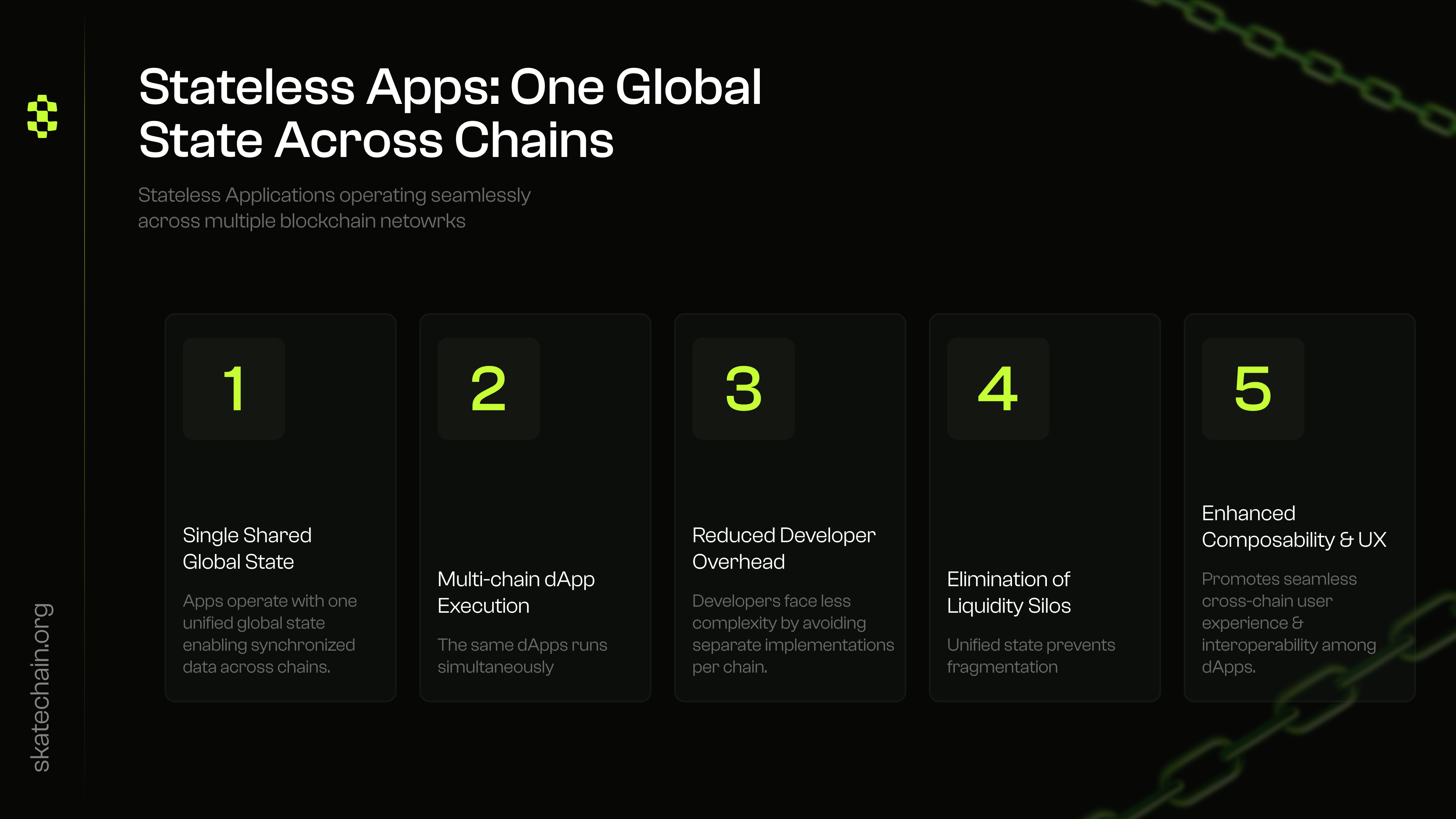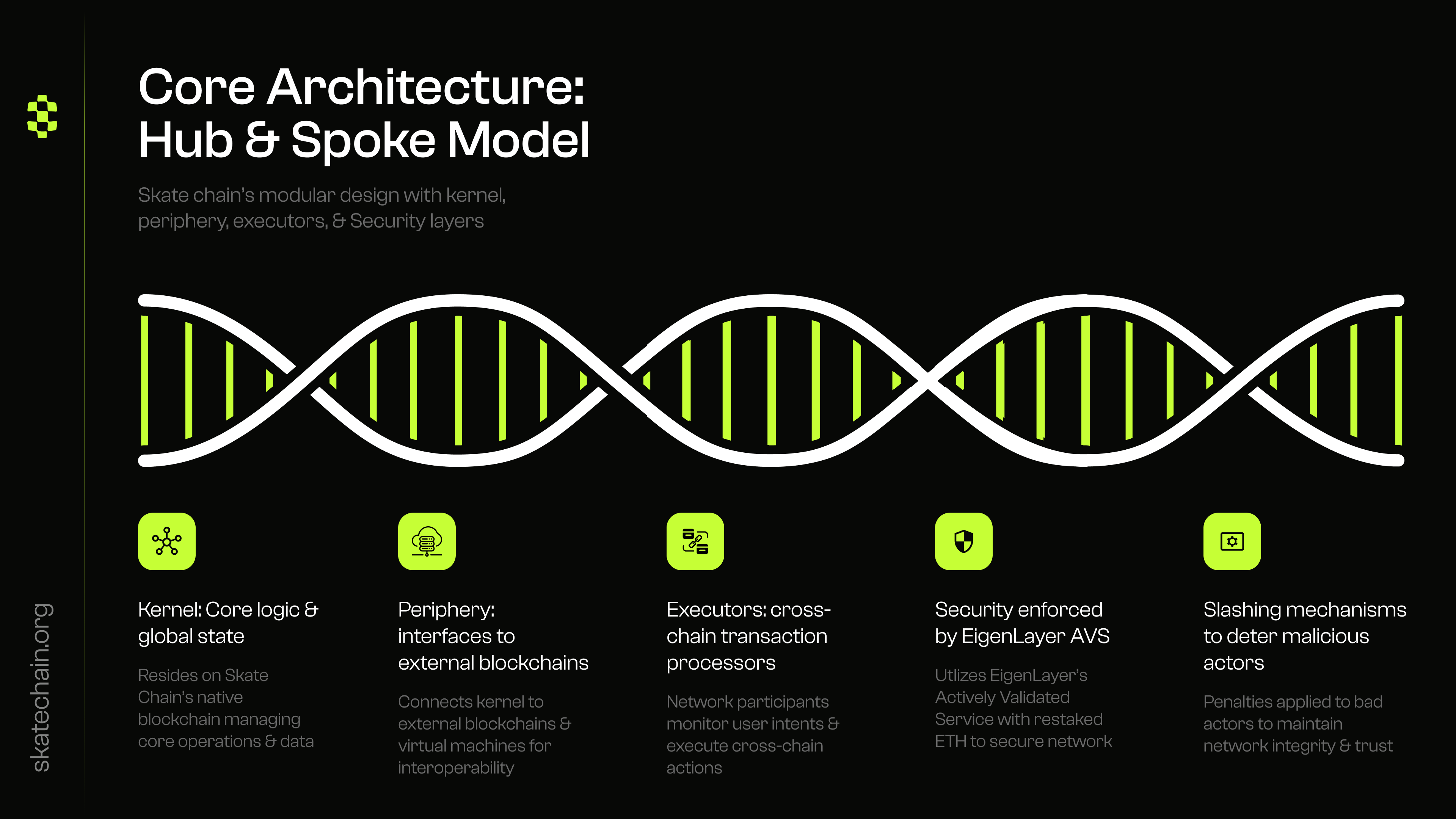
Stateless Apps: One Global State Across Chains
Stateless Applications: The Pattern
A stateless application decouples core business logic and canonical state from execution and settlement concerns. The Kernel (Hub Chain, or “Server”)- Maintains the single source of truth for application state
- Executes all core business logic
- Enforces protocol invariants and safety guarantees
- Generates deterministic task outputs describing state updates
- Handles user-facing interactions on individual blockchains
- Manages local asset custody and user onboarding
- Stages user intents (actions) for processing on the kernel
- Receives task callbacks and finalizes execution results
- Maintains no core state. It is purely a reflection of hub-chain truth

Skate Core Architecture
How Execution Flows
- User Action on Spoke Chains: A user interacts with a periphery contract on their preferred blockchain (Solana, Ethereum, Sui) and creates an Action. This Action describes the user’s intent for what they want to do.
- Executor Relay to Kernel: The Execution Network listens to periphery contracts across all chains and picks up these Actions. Executors relay them to the kernel contracts deployed on the hub chain.
- Kernel Processing: The kernel validates the Action against canonical state and applies the application’s core business logic. If the action requires effects on other chains (such as settling a swap), the kernel produces a Task. This Task describes the exact state update and settlement requirements.
- Task Attestation: The EigenCloud AVS operators review the Task and attest to its correctness. Once the attestations reach sufficient quorum, the task is considered validated.
- Task Settlement on Spoke Chains: After achieving quorum, the validated Task is settled via callbacks on the destination periphery chains. Assets are transferred and local views update to match kernel truth.

